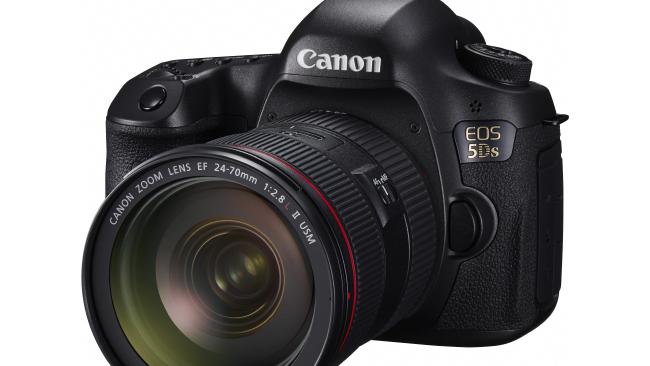
DO MORE megapixels deliver better photography?
It’s a question Canon poses as it delivers the world’s highest photo resolution full-frame digital camera.
The Canon EOS 5DS looks like other cameras of its kind but it hosts an advanced image sensor capable of capturing 50.2-megapixel images — images so large Canon says it is an alternative to a medium format camera used to shoot billboards and magazine covers.
SHARP SHOOTERS: Five advanced cameras reviewed
BIG CAMERA: Nokia puts a 41-megapixel camera inside a phone
Processing, delivering, and storing that many megapixels delivers challenges, though. We put the 5DS through its paces to determine whether the choice of greater resolution is clear.
Canon’s entry to the big-megapixel brigade was a considered one, with rumours of a multiple-megapixel boost chasing the company for years.

Weather-ready … Canon’s EOS 5DS 50.6-megapixel DSLR camera is sealed for water-resistance.Source:Supplied
They were clearly on to something, as Canon developed this camera’s 53-megapixel full-frame sensor itself, and paired it with two DIG!C 6 image processors to ensure speedy operation.
The 5DS’ effective 50.2-megapixel resolution is a 28.1-megapixel jump over its three-year-old predecessor, the 5D Mark III, and should appeal to landscape photographers who crave fine details, and anyone shooting a wedding or studio portraiture.
What does this megapixel boost really mean? Photos from the Canon 5DS are enormous — each 14-bit RAW file weighs in at more than 65 megabytes — but they also deliver unprecedented detail. You could crop a full-resolution photo from this camera several times, and create several crisp individual photographs from just one image, if the focus is right.
In a more likely scenario, you could crop a photo in just about any way you pleased, omitting distracting details, and retain a printable photograph.
You could also print a 10×15-inch (25.4cm x 38.1cm) photo at 600 dots per inch from one of this camera’s photos, or print a poster at 300 dpi.
Naturally, wrangling photos of this size presents challenges but Canon rises to meet them.
Photographers might be surprised at just how fast the 5DS operates given its resolution, and much of the credit is due to its dual processors.

Familiar navigation … The Canon EOS 5DS camera has a familiar layout.Source:Supplied
Using these, you can capture five frames a second with this camera — slower than its 22-megapixel predecessor but impressive nonetheless.
Canon also endeavours to eliminate shake from this camera, which will be more evident given its greater resolution. It does this by redesigning its mirror mechanism, allowing the mirror to decelerate before impact to reduce vibration. The camera also features a reinforced tripod mount, and the ability to delay the shutter opening after the mirror moves.
Thanks to these stability features, and a 61-point autofocus mechanism, photos from this camera are regularly sharp. It also reproduces natural colour, and is particularly accurate with skin tones.
Also worth noting is the camera’s weather-sealed, magnesium alloy body, comfortable and familiar button layout, and the addition of an intervalometer to create time-lapse videos in the camera.
There are trade-offs in this high-resolution camera, however, and they will disappoint videographers and some enthusiasts.
Despite its top-of-the-line photo resolution, this camera will not shoot top-of-the-line 4K video. It also loses the headphone jack of its predecessor, and its HDMI output is compressed.
Night-life photography may also be harder with this camera as its light sensitivity only stretches to 6400 ISO, or 12,800 outside its automatic setting. It’s a big step down from its predecessor that offers 25,600 ISO or up to 102,400.
There’s also no wireless connectivity in this camera, so you’ll need a cord or a card reader to share your multi-megapixel photos — a limitation that may save your phone storage.
Ultimately, Canon’s 50.2-megapixel behemoth will not suit every DSLR-toting photographer. It will require a lot of memory cards, a steady hand, it doesn’t match the lowlight performance of its rivals, and its skills lie in still rather than moving images.
It is surprisingly speedy for a megapixel monster, though, and its results can be worthy of printing just as large as its resolution allows.
Canon EOS 5DS
4 out of 5 stars
$4699 / canon.com.au
[SOURCE :-news]

